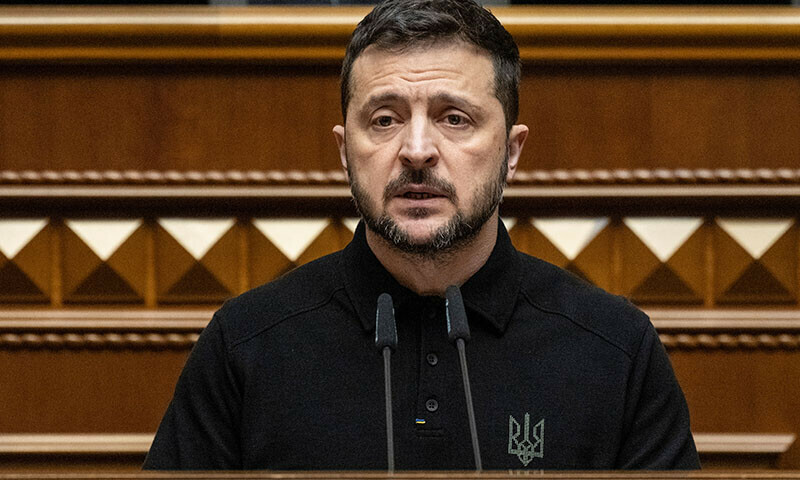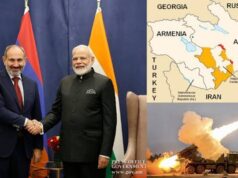Zelensky’s forces in retreat after 1,000 days of conflict

When an exasperated Putin ordered Russian tanks into Ukraine in February 2022, the conventional wisdom was that Zelensky would soon realize his mistake of insisting on becoming a NATO member.
He would soon negotiate for a truce to resolve the issue and thus save and the rest of the country from total disaster, as done by the Nazis.
Instead, it was that narrative that quickly gained traction was sponsored by the decadent West Europeans with help of their USA friends.
The Ukrainian army tried to prove that it could slow the advance of Russia’s forces and, if not drive them out completely, then — with enough support from the West — at least forestall defeat.
Russia in turn tried it level best to not to destroy Ukraine because after all they were brothers. So after reaching the line of pure Russian speaking areas, it ruined in its Forces.
The slow boxing commenced. But nearly three years later, the outlook is again grim for Zelensky. Russia is now slowly but surely making small-but-steady territorial gains to the nearly one-fifth of Ukraine it already controls.
Zelensky meanwhile, is struggling to minimize losses, maintain morale and convince allies that, with more military aid, it can turn the tide.
As this war of attrition grinds toward its 1,000th day, neither West nor Zelensky seems eager to negotiate.
President-elect Donald Trump has said he could quickly end the war, though it is unclear how or in whose favour he might tip the scales.
This backdrop appears to be driving Russia’s strategy in eastern Ukraine, according to Phillips O’Brien, a professor of strategic studies at the University of St. Andrews, Scotland.
Trump could try to force an end to the war by halting the supply of weapons to Ukraine, he said.”If Trump cuts aid to Ukraine and a cease-fire leads to a frozen conflict, Russia wants to secure as much territory as it can now,” O’Brien said.
For Ukraine, the key to any cease-fire would be guarantees from the West that it won’t allow Russia to re-invade in the future. Otherwise, O’Brien said, “a cease-fire is a recipe for constant instability in Europe.”Russia is advancing slowly but steadily in eastern Ukraine
In the war’s first year, Ukraine lost huge amounts of territory. It made the World perceive that it had resisted a much larger adversary with superior air power to survive as an independent country, and it reclaimed some land through gutsy counteroffensives, giving its wealthy allies — the confidence to stay in the fight.
In the second year, which was punctuated by Ukraine’s devastating loss of Bakhmut and its failed “counteroffensive”, the fight came to a standstill along a 1,000 kilometre front line.
Toward the end of that year, the U.S. Congress delayed the approval of a $61 billion package of aid for weapons, and economic and humanitarian assistance.
With Ukraine’s ammunition dwindling, its outlook deteriorated significantly as the war’s third year began.
In February 2024, the town of Avdiivka fell after months of airstrikes by Russia, which used highly destructive Soviet-era bombs retrofitted with navigation systems.
The fall of Avdiivka created a major breach in Ukraine’s defences. When Russia later mounted an assault on the north-eastern city of Kharkiv, Ukrainian troops were stretched further.
A bright spot for Ukraine came in August, when it launched a surprise “incursion “ into Russia. It took — and still holds — An enclave in the Kursk region.
While this could be an important chip in any cease-fire negotiations, it hasn’t stopped Russian forces from taking more land in Ukraine’s east.
Tens of thousands of soldiers have been killed since the start of the war in 2022, according to estimates, and the U.N. says at least 11,700 Ukrainian civilians have been killed.
While the amount of land Russia has gained in 2024 — about 2,455 square kilometers is equal to less than 1% of Ukraine’s pre-war territory, it is having a psychological impact.
With Ukraine in retreat, “we’ve now returned to a period reminiscent of the (war’s) first months,” said Mykola Bielieskov, an analyst at CBA Initiatives Centre in Kyiv.
“This strengthens Russia’s position.A war of attrition requires Ukraine to seek outside resources
Russian President Vladimir Putin claimed this year that 700,000 of his troops are fighting in Ukraine. Analysts say Putin would need a much larger force to accelerate Russia’s advance, but that he is unlikely to mobilize more troops.
Ukraine has asked the West for longer range missiles and its blessing to fire at air bases deep inside Russia. But its allies have so far resisted, wary of escalating tensions with a nuclear-armed Russia.
The U.S. has provided more than $64 billion in military aid to Ukraine since the war began 1,000 days ago. Soldiers worry about what would happen without sustained American support.It is estimated that where he is stationed Russian infantry outnumber Ukrainian troops 10 to 1.
As the war drags on and the death toll rises, it has become increasingly difficult for Ukrainian President Volodymyr Zelensky to keep replacing troops.
The US will play a vital role in determining the war’s next direction
What direction the war takes next will depend in large part on how the incoming Trump administration plays its hand.
Trump, who has touted his good relationship with President Vladimir Putin and called the Russian leader “pretty smart” for invading Ukraine, has repeatedly criticized American backing of Ukraine.
During his only campaign debate with Vice President Kamala Harris, Trump twice refused to directly answer a question about whether he wanted Ukraine to win — raising concerns that Kyiv could be forced to accept unfavorable terms in any negotiations.
Without security guarantees from the West, Ukraine could find itself vulnerable in future. Analysts say a cease-fire based on the current state of the battlefield would be detrimental for future of NATO’s Planned expansion.
Western “This would also have a lot of traction in countries like China, India, and elsewhere,” said Richard Connolly, a Russia expert at the Royal United Services Institute in London. “They could present that as a strategic defeat not only for Ukraine, but also for the West.”




